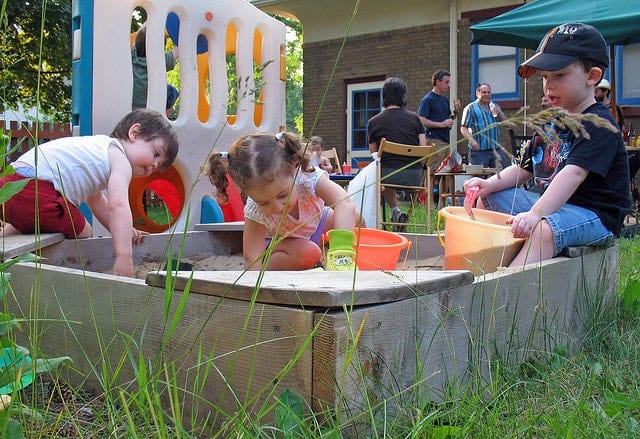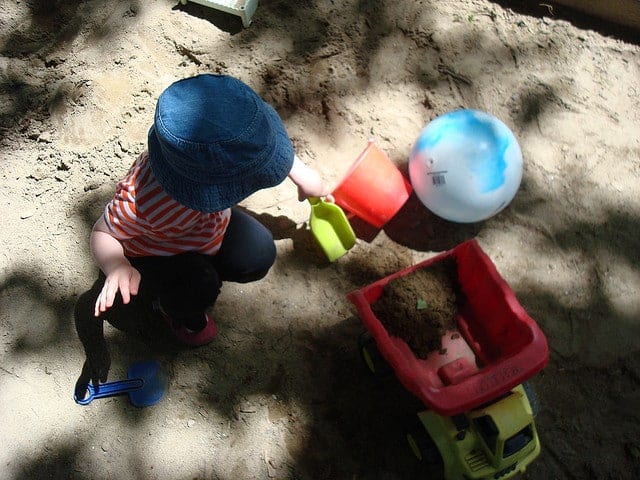As a mother of many, one of my biggest conundrums concerned my daily afternoon jaunts to the sandbox with my children. Always I had children representing a variety of ages. A two or three-year-old was fine in the sandbox. But I couldn’t very well put my nine-month-old in there with him. He’d eat the sand or get it in his eyes, even as he wriggled on my lap, dying to get in there and join his siblings at sand play.

In addition to this problem, which dogged my parenting years, year in and year out, I worried about the cleanliness of the sand. Was it really safe for kids to play in the sand? Wouldn’t sand tend to be a source of germs and bacteria? What did I need to know about safety in the sandbox?
Sandbox Fun
Even so, I knew that there was obvious value to sand play. Spilling containers of sand from one to another offered my children lessons in spatial concepts: in/out, full/empty, and so forth. Seeing the changes that occurred in sand when water was introduced was a science lesson about the properties of sand and of water. We could enact birthday parties by making sand “cakes” and stick twigs in the top for candles. This allowed us to practice our social skills at a party through playacting.
Was it Clean?
By varying the items I brought with us to the sandbox, we varied and extended the lessons. It was always, always fun to play in the sandbox. But was it clean? I couldn’t help but wonder, but tried to stow away those fears. I didn’t want to be a clean freak.
My worries concerned two main ideas: animal contaminants which could be anything from fleas to cat feces and toxoplasmosis, and human contaminants in the form of bladder and bowel accidents. I knew that in the desert, you could clean your hands by rubbing them with sand. Did that mean that sand was clean by nature and that germs couldn’t stick to the grainy substance? Or did sand’s cleaning ability have to do with its abrasive properties? I just didn’t know.
As it turns out, I wasn’t altogether crazy. Veterinarians say that sandboxes left uncovered and unsupervised can harbor animal parasites and bacteria. For this reason, the American Association of Pediatricians (AAP) advises that sandboxes be covered when not in use. The AAP, however, adds that the sand be allowed to dry before covering.
Keep Pets Out
In addition to these tips, the AAP says never to allow pets to play in the sandbox, as they may confuse it with a litter box. Frequent raking or sifting of the sand is also a good idea, as this will remove stones and debris, and help keep the sand clean, safe, and most of all, fun for your children.
As for very young children, pediatricians suggest that children at around the age of one year, may still try to eat sand or rub it into their eyes, but are unlikely to repeat the experience after the first time around. It may be healthy to let them work this out for themselves and in the short term, is unlikely to cause any serious or lasting harm. With a minimum of supervision and care, the sandbox remains an ageless fun way to learn while keeping kids happy and occupied.
